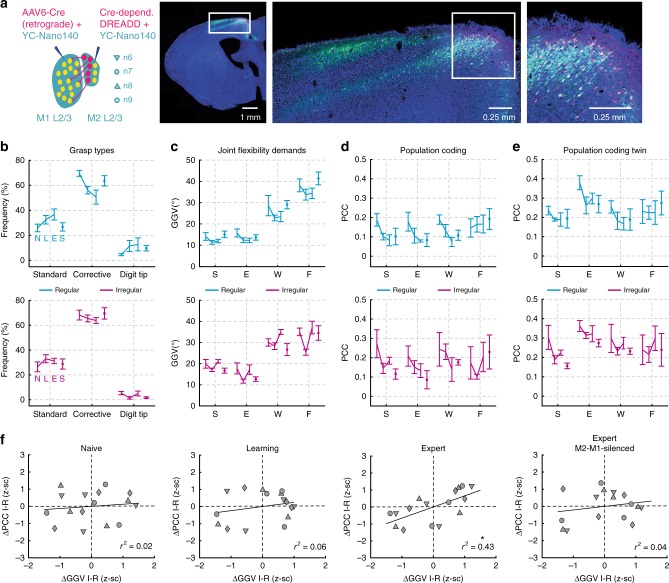Fig. 7.
Context-dependent encoding during learning and dependence on M2 input. a Expression of the DREADD system in M2 L2/3 and L5 (hM4Di receptor and mCherry). Temporal development of grasp type frequency (b), joint flexibility demands (c), population coding (d), and population coding for twin grasps (e) during the naive (N), learning (L), expert (E), and expert M2-M1-silenced phase (S), and separately for the regular (cyan) and irregular (magenta) condition; mean ± s.d., n = 4. f Population coding according to joint flexibility demands during the naive, learning, expert and expert M2-M1-silenced phase, respectively (only twin grasps are considered). Note that context-dependent encoding according to joint flexibility demands emerges during learning and is disrupted after silencing of M2-M1 projections; asterisk indicates P < 0.05, linear regression with clustered standard error (robust); cluster variable = neuronal network

